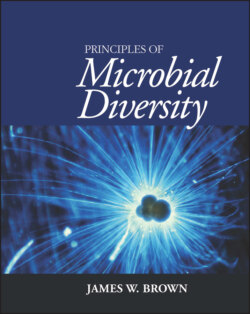Читать книгу Principles of Microbial Diversity - James W. Brown - Страница 16
Morphological diversity
ОглавлениеMicrobes are often divided by shape into rods, cocci, and spirals. Although these are the most common cell shapes, bacterial and archaeal cells also come in a wide range of other shapes: filaments (branched or unbranched), irregular, pleomorphic (different shapes under different conditions or even in the same culture), star-shaped, stalked, and many, many others. Haloquadratum is a flat, square organism, just like a bathroom tile (Fig. 1.1).
Individual cells of whatever shape can be found in a variety of multicellular arrangements, from simple pairs and tetrads to multicellular filaments, sheets, rosettes, and true multicellular organisms. Many species form highly structured multispecies mats that resemble the tissues of animals and plants that carry out complex biochemical transformations (Fig. 1.2).
Figure 1.1 The tile-shaped halophilic archaeon Haloquadratum walsbyi. (Source: Wikimedia Commons.) doi:10.1128/9781555818517.ch1.f1.1
Figure 1.2 Section of a stratified microbial mat from Guerrero Negro, Baja California. (Copyright 2007, American Society for Microbiology. Photo by John R. Spear and Norman R. Pace.) doi:10.1128/9781555818517.ch1.f1.2
Most bacteria and archaea measure 1 to 5 µm, but they range from 0.1 μm in thickness to over a millimeter. At the low end, it is hard to understand how everything that is needed for life could fit into the cell. At the high end, they can be easily seen without a microscope (Fig. 1.3).
